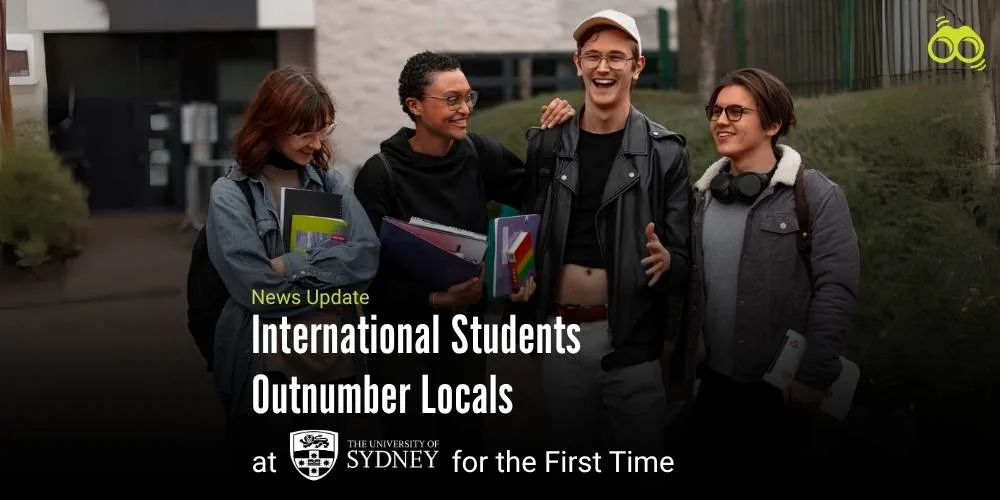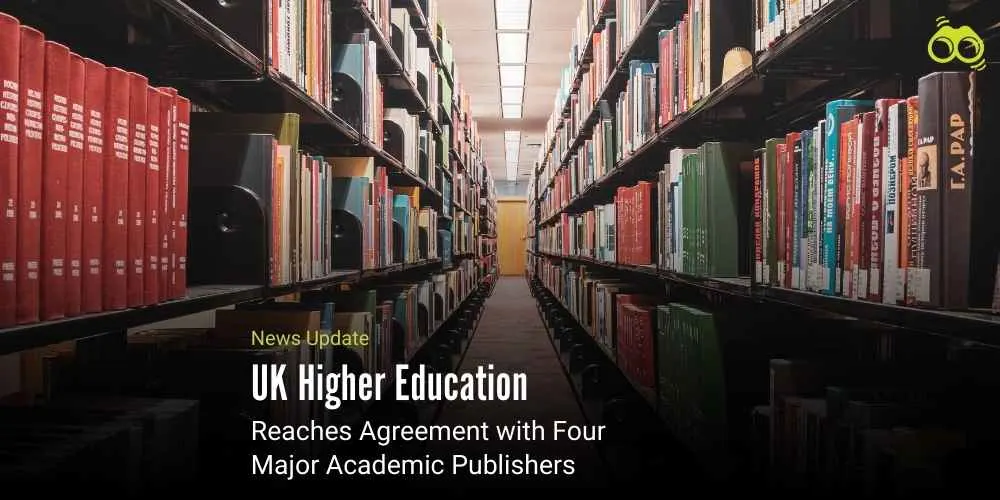International Enrolments Surge Across Australia’s Leading Universities
Overseas Students Now Majority at Australia’s Oldest University
The University of Sydney is one of Australia’s oldest universities and is well known for its academic excellence. Since 1850, the university has excelled in research fields, diverse academic programmes, and consistently secured a rank among the top 50 universities worldwide. As the international students are said to make up a significant part of the university’s student body, the recent picture revealed a sharp surge in the enrollment numbers. This upward trend was notably reflected as a new milestone in the achievements of the university. For the first time in its 170-year history, overseas students outnumbered the domestic ones. Statistics released by The Australian showed that 51 per cent of the university's student body in 2024 had been from abroad. This amounted to 39,725 overseas students and 35,727 Australians, with foreign enrollments reportedly having brought in about $1.6 billion in fees.
Onlookers mentioned that this trend was not Sydney-specific. In all of Australia's Group of Eight research institutions, foreign students were known to make up between one-third and one-half of all enrolments. The University of New South Wales was reported to have achieved 46 per cent overseas enrolment, and Murdoch University in Perth was reportedly at 45 per cent. The University of Melbourne was known to have recorded 43 per cent, with the Australian National University and the University of Queensland recording 40 and 39 per cent respectively.
Sector experts noted overseas students were disproportionately strong in certain fields. Earlier reports had indicated international enrolments made up as much as two-thirds of information technology students, over half of management and commerce students, and approximately 40 per cent of engineering students. Overseas students were, in some instances, said to be paying up to $200,000 for one degree, highlighting the economic magnitude of global study and the popularity of studying in Australia.
Commentators noted that Australian universities came to depend heavily on international students, not by choice but out of desperation due to years of long-term underfunding. Luke Sheehy, Universities Australia chief executive, was said to have stated that international students were crucial to the university sector and the economy as a whole. He had stressed that their payments supported world-class research and education, which translated to benefits for all Australians. Besides, he had pointed out that foreign students contributed significantly to filling up skill gaps in national areas of high demand like IT and engineering, in addition to deepening global connections.
The University of Sydney was reported to share the same sentiment. A university spokesperson had confirmed that foreign students comprised 47.5 per cent of the entire student population in 2025. It was reported that 35 per cent of the undergraduate population and 64 per cent of postgraduates were international. The spokesperson had proudly spoken of the international student population of the university, citing their diversity in the classroom as well as in research excellence. Not every voice in the argument, though, seemed to be behind it. Leith van Onselen, MacroBusiness chief economist, was quoted as saying international education was "one big migration scam" in an interview with Sky News. He had previously asserted that Australia boasted one of the highest proportions of international students in the world, second only to Luxembourg. Citing a recent Jobs and Skills Australia report, van Onselen had posited that most overseas students were chiefly driven by employment prospects and the possibility of permanent residence, as opposed to educational objectives.
This view opened up more general questions about the integrity of Australian student visa pathways and the role of international university trends in setting national education policy. While proponents remained keen to highlight the economic and academic advantages of foreign education opportunities, critics cautioned that the lines between education and migration were growing ever thinner. Finally, the University of Sydney's achievement was regarded as representative of a broader shift in Australian universities. While international students continued to forge the future of international education, the industry had to reconcile financial viability, academic merit, and migration policy. The way forward would more than likely need to be carefully managed so that Australian university systems remained credible, inclusive, and internationally competitive.
Editor's Note
The landmark achievement by the University of Sydney is a proud moment for the whole of Australian higher education. One of the nation's oldest and most venerable universities now has more foreign than domestic students is not an inconsequential fact. It says much about Australia's standing in the world, but also raises profoundly uncomfortable questions about funding, priorities, and sustainability over the long term. On the one hand, having foreign students is an undeniable advantage, providing diversity, economic contribution, and international connections. Their impacts on research, innovation, and human skills development are genuine and meaningful. However, it's difficult to overlook the underlying issue: are universities too reliant on foreign fees to survive? The proposition that international education is being utilised as a backdoor to migration is draconian-sounding, but it betrays a growing anxiety. Once education policy begins to intersect with immigration strategy, clarity and integrity must be preserved. Otherwise, the legitimacy of both systems is likely to suffer. This progress demands more than mere celebration; it calls for profound reflection. Australia must decide if it will lead international education through strategic foresight and influence, or merely participate out of economic necessity. While the University of Sydney achieves unprecedented success, the entire industry must establish a clear direction.
Skoobuzz believes that Australia must move beyond short-term gains and build a university system that’s globally respected and locally resilient.
FAQs
1. Why are international students choosing Australian universities?
It has been widely observed that international students are drawn to Australian universities for several reasons. Many are said to appreciate the high academic standards, strong global rankings, and wide range of courses offered. Australia is often described as a safe, welcoming country with a multicultural environment, which makes it easier for students to settle in. Others have noted that the opportunity to work part-time during studies and apply for post-study work visas adds to the appeal. The climate, lifestyle, and English-speaking setting are also frequently mentioned as deciding factors.
2. How to get a student visa for Australia?
To study in Australia, students are usually required to apply for a Student visa (subclass 500). It has been explained that applicants must first receive an offer from an approved education provider and then obtain a Confirmation of Enrolment (CoE). They are expected to show proof of financial capacity, meet health and character requirements, and hold adequate health insurance. English language proficiency is also commonly required. The visa process is said to be mostly online, and students are advised to prepare documents carefully and apply well in advance of their course start date.
3. What are the top universities in Australia for international students?
Australia is known for having several top-ranked universities that attract students from around the world. The Group of Eight universities are often mentioned in this context, including the University of Sydney, University of Melbourne, Australian National University, University of Queensland, University of New South Wales, Monash University, University of Western Australia, and University of Adelaide. These institutions are said to offer strong research programmes, excellent facilities, and global recognition, making them popular choices for overseas students.
4. Is the University of Sydney good for foreign students?
The University of Sydney is frequently described as one of Australia’s leading institutions for international students. It has been noted that the university offers a wide range of undergraduate and postgraduate programmes, many of which are aligned with global career pathways. International students are said to benefit from high-quality teaching, strong research opportunities, and a vibrant campus life. The university is also known for its support services, cultural diversity, and central location in one of Australia’s most iconic cities.
5. How do international students affect local education in Australia?
International students are understood to play a major role in shaping Australia’s education system. Their presence is said to bring financial stability to universities, especially through tuition fees that help fund research and infrastructure. Many have pointed out that international students contribute to classroom diversity, global perspectives, and cultural exchange. However, some commentators have raised concerns about over-reliance on overseas enrolments and the pressure it may place on housing, resources, and job markets. Overall, their impact is seen as both enriching and complex.














0 Comments (Please Login To Continue)